Mushroom hunting is an exciting and rewarding pastime that combines a love for nature with the thrill of discovery. Not only do you get to spend time outdoors, but you’ll also have the chance to enjoy the fruits of your foraging labor. For those new to mushroom hunting, it’s essential to know where to look for these elusive fungi, especially if you’re searching for choice varieties like morels.
One aspect that makes mushroom hunting so fun is the multitude of places to search. From national parks and forests to local nature preserves, opportunities for foraging are abundant around you. When starting your hunt, be sure to brush up on local foraging regulations and identify safe, edible mushrooms. As you explore and develop your skills, you’ll soon become an expert in finding mushrooms in your area. Remember, patience and a keen eye are key to a successful mushroom hunt. Good luck and happy foraging!

The Basics of Mushroom Hunting
Mushroom hunting can be a fun and rewarding outdoor activity if you know what you’re doing. This friendly guide will help you get started with the basics.
Firstly, familiarize yourself with the types of mushrooms in your area. Some common edible mushrooms include morels, chanterelles, and oyster mushrooms. It’s essential to know the differences between edible and poisonous mushrooms, so invest time in researching and learning about the various species.
To ensure your safety, never consume any wild mushroom without being 100% certain of its identification. If you’re unsure, consult an experienced mushroom hunter or a local mycologist. Carry a guidebook or use a reliable app to help with identification.
When searching for mushrooms, wear appropriate clothing and shoes for the outdoor conditions. Remember that some mushrooms might be in damp, muddy areas, so waterproof shoes are a good idea. Bring a knife or scissors to cut the mushroom at the base, a brush to remove dirt, and a basket or breathable bag for collecting.
The ideal time for mushroom hunting is during spring and fall when the weather is damp and mild. Morels, for example, are often found from late March through June. Check your local area’s climate and seasons to pinpoint the best time for your mushroom hunt.
In general, mushrooms prefer areas with moisture and good soil content. Look for them around streams, creeks, and swampy areas even in hot weather. Dense forests with decaying organic matter or near tree trunks can also be productive spots. Be sure to respect private property, always ask for permission if entering private land, and follow any rules and regulations when foraging on public lands.
Lastly, practice sustainable harvesting by only taking a portion of the mushrooms you find, leaving some to continue growing and reproducing. This way, you’ll be able to enjoy mushroom hunting for years to come.
Where to Go Mushroom Hunting Near Me
Mushroom hunting can be a fun and rewarding hobby, especially when you know where to look. In general, forests, state parks, private lands, and public lands can offer a variety of opportunities for foraging. However, always ensure you have permission and follow any rules or regulations when accessing these areas.
In the Pacific Northwest, forests like the Olympic Peninsula and areas north of Seattle are great places to start. The region is famous for its diversity of fungi, and you can discover many edible mushrooms here like chicken-of-the-woods. Additionally, southern cascades and eastern Washington also offer plenty of mushroom hunting opportunities.
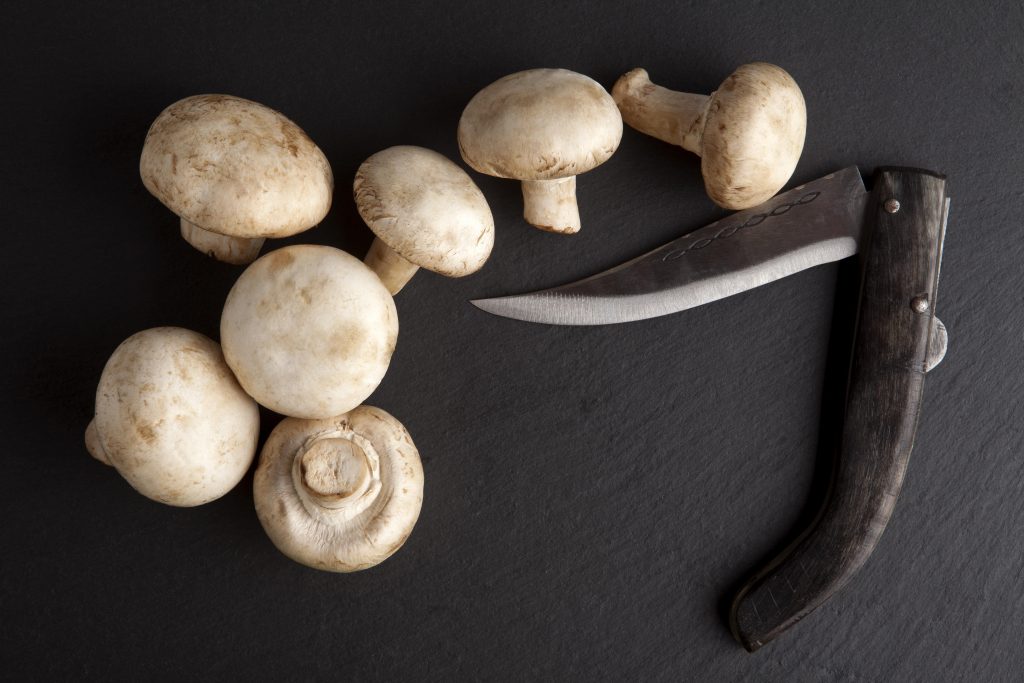
Moving east, Indiana hosts expansive public forests, perfect for foraging. Don’t be afraid to explore local forest trails, as they can often lead you to patches of delicious mushrooms. Make sure to familiarize yourself with the local species and follow all state park guidelines.
In New York, you can try your luck in the state parks scattered throughout the region. The variety of forests and landscapes provide a vast range of mushroom species to find. Just remember to pack your basket, knife, and identification resources to help you safely gather nature’s bounty.
Don’t forget that mushrooms can also grow right in your own yard! If you have wooded or shaded areas on your property, you might be surprised to find a few tasty species growing near you. Be extra cautious with your identifications, and never consume any mushrooms you’re unsure about.
To enhance your foraging experience, consider joining a local foraging group or sign up for a mushroom hunting tour. These guided outings will provide you with valuable knowledge, tips, and safety precautions to make your mushroom hunting adventures successful and enjoyable. Happy foraging!
Best Time for Mushroom Hunting
Finding the perfect time for mushroom hunting can improve your chances of success and make your experience more enjoyable. In general, morel mushrooms appear during the spring months when the weather conditions are favorable. Don’t worry! Here’s some information to help guide you on when to go, the ideal seasons, and the best conditions for mushroom hunting.
It’s important to consider the seasons and weather when planning your mushroom hunting adventure. Morels typically emerge during early spring, when daytime temperatures are in the 70s and nighttime lows are in the 50s. Keep an eye on the forecast and plan your trip around days with these ideal temperatures.
Another factor to consider is the soil temperature. Morel mushrooms need a ground temperature of around 50 degrees at four to six inches below the surface to thrive. This usually occurs in mid to late April, but they can also be found earlier or later, depending on the weather.
Rain can also play a significant role in determining when mushrooms will sprout. Mushroom growth is stimulated by moisture, so regularly checking weather updates and heading out after a rainfall can increase your chances of finding mushrooms.
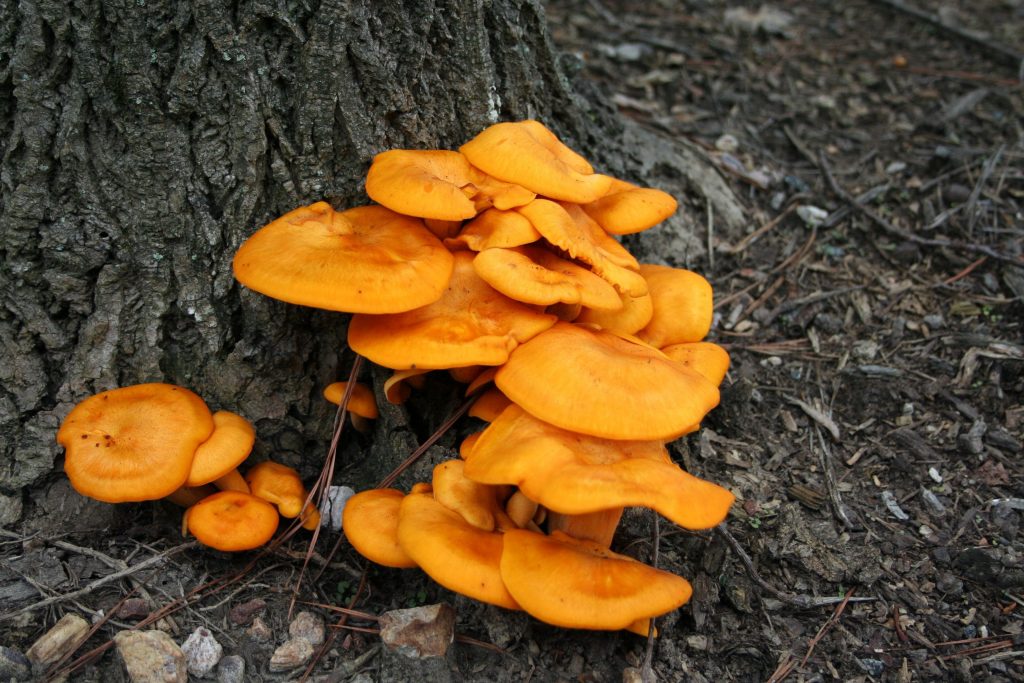
Sunlight is another essential factor to keep in mind while planning your hunt. Morel mushrooms tend to grow first on south-facing slopes and areas with fewer trees, where the soil warms up more quickly due to increased sunlight exposure.
Keep these factors in mind, and be flexible with your plans. Good luck, and happy mushroom hunting!
Mushroom Species and Habitats
When you go mushroom hunting, it’s essential to familiarize yourself with the different species and their habitats. Here’s a brief overview of some popular mushrooms and where to find them.
Morels are highly sought-after mushrooms, known for their distinctive, honeycombed appearance and delicious taste. You can often find these fungi on south-facing slopes that receive the most sunlight, early in the mushroom hunting season. As the season progresses, expand your search to include north-facing slopes as well.
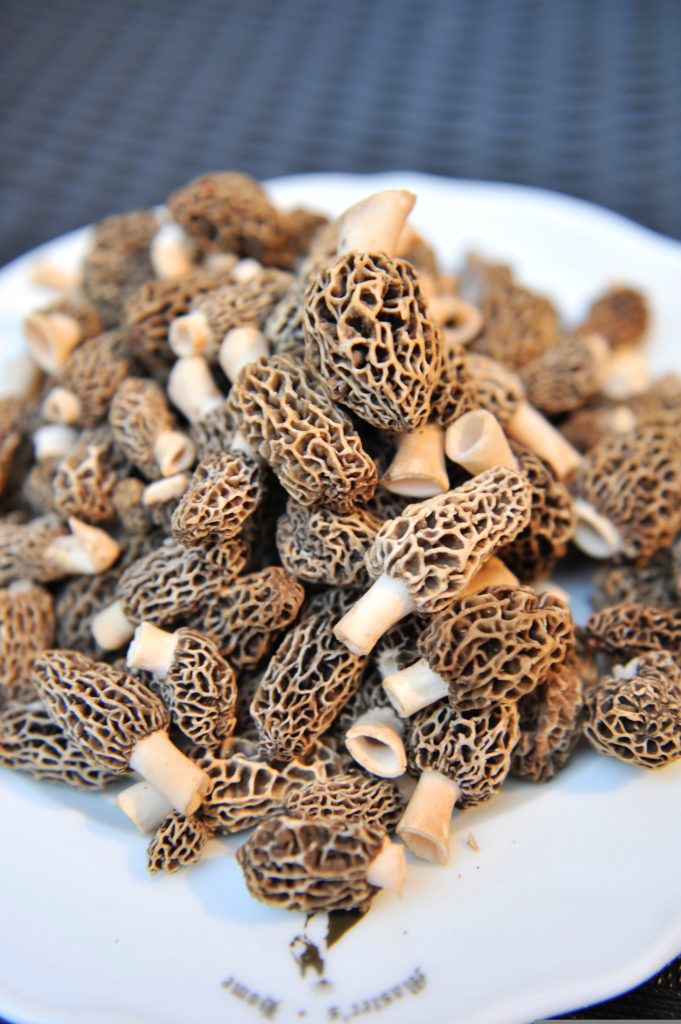
Chanterelles are another popular choice for foragers, with their trumpet-shaped caps and vibrant colors ranging from yellow to orange. Keep an eye open for these mushrooms in the hardwood and coniferous forests, particularly in areas with a lot of moisture and leaf litter on the ground. They tend to prefer mild, wet environments during the summer and fall months.
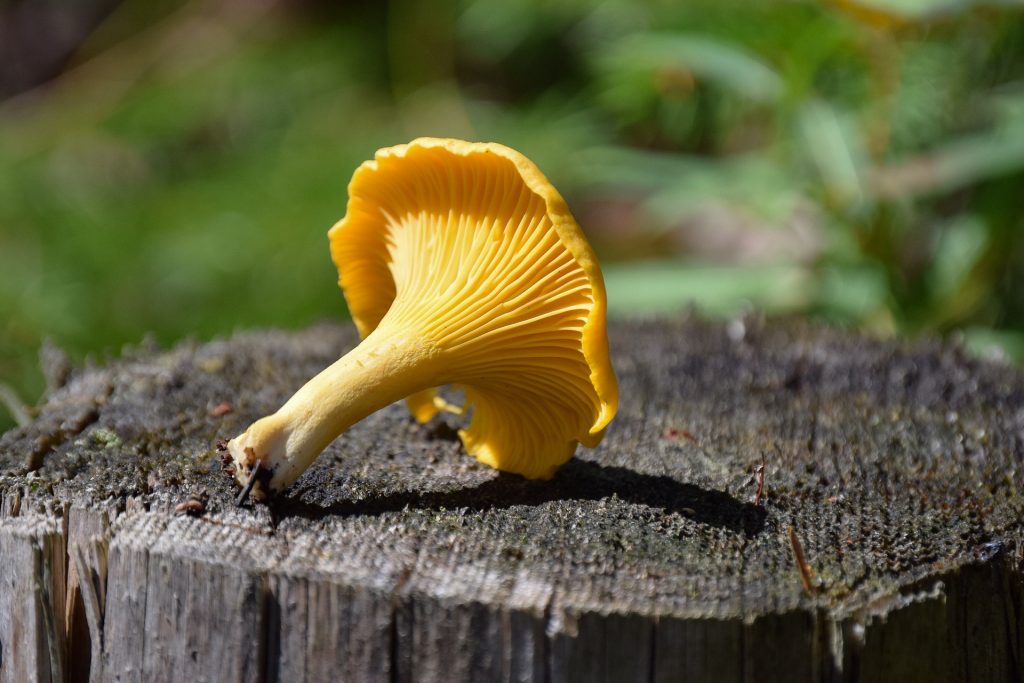
Shaggy mane mushrooms get their name from the shaggy, white appearance of the caps. These interesting fungi are easy to spot because of their unique look. You have a better chance of finding them in lawns, urban areas, and on the side of roads during fall and spring.
While seeking these specific mushrooms, remember that not just morels, chanterelles, and shaggy manes are out there. There’s a whole world of psilocybin mushrooms too. While some grow deep in the forest, others can grow in cattle pastures in places like Texas and east towards humid central Florida.
Always remember to use a friendly and cautious approach when mushroom hunting, as many species look similar and edible ones might be easily confused with their toxic counterparts. Happy foraging!
Foraging Strategies and Tips
Mushroom hunting can be a rewarding outdoor activity, especially when you know the best places and strategies to find them. With some basic knowledge of foraging techniques, you can increase your chances of finding a variety of mushrooms in your area.
When starting your foraging adventure, it’s essential to choose the right trail. Look for trails near river bottoms, as the moist and damp environment can create ideal conditions for mushrooms to grow. River bottoms also provide diverse vegetation, which may support different mushroom species.
South-facing slopes are another great location to explore. These areas often receive more sunlight, allowing the ground to warm up faster in the early spring months, promoting mushroom growth. Plus, the incline keeps the soil relatively well-drained, providing a good balance of moisture for fungi to thrive.
Don’t overlook burn areas from recent wildfires. Morel mushrooms, in particular, are known to flourish in these environments, as they take advantage of the cleared understory and the nutrients released by the fire. Make sure you are aware of any regulations and safety measures before venturing into such locations.
While hiking, pay close attention to the vegetation. Mushrooms often form symbiotic relationships with specific plant species, so familiarizing yourself with the local flora may guide you to fruitful hunting grounds. For instance, chanterelle mushrooms are commonly found near oak, hemlock, and beech trees.
Here are some foraging tips for a successful mushroom hunt:
- Safety first: Always positively identify mushrooms before consuming them, as some may be toxic. Reach out to foraging groups or resources to improve your knowledge, but if uncertain, it’s better to leave them untouched.
- Respect your environment: Practice ethical foraging by not over-harvesting and by being mindful of the ecosystem you’re exploring.
- Timing is crucial: Plan your hunt after periods of rain and when temperatures are suitable for mushroom growth, usually early morning or late afternoon.
With these strategies in mind, you’ll be well-prepared for a successful mushroom hunting experience. So, grab your hiking boots, some comfortable clothes, and enjoy your time reconnecting with nature. Happy foraging!
Guides and Resources
If you’re looking to go mushroom hunting, having the proper guides and resources is essential for a successful and safe experience. There are a variety of options available to help you learn more about foraging for mushrooms.

A great starting point is to find a reputable guidebook or field guide specifically tailored to your region. These books typically provide valuable information on the types of mushrooms you can expect to find, as well as tips for identifying and safely harvesting them. You can purchase guidebooks online or in bookstores specializing in outdoor activities.
Taking a class is another excellent way to learn more about mushroom hunting. Many organizations and experts offer classes, both online and in person, that can teach you how to safely identify wild edible mushrooms. For example, the Mushroom Hunting Foundation offers guided mushroom walks and hands-on experience. They can even recommend a location or join you on familiar paths, ensuring you’re learning in a comfortable environment.
If you’re looking for a unique gift idea or want to treat yourself, consider getting gift certificates for mushroom hunting classes. These can be purchased through organizations or individual experts offering the classes.
As you continue your mushroom hunting journey, don’t hesitate to reach out to experienced foragers, either through email, call, or contact forms on their websites. Many experts are more than happy to share their knowledge and tips with enthusiastic beginners.
In summary, investing in a guidebook or field guide, taking a class, and connecting with experienced foragers can all significantly improve your mushroom hunting skills. With these resources, you’ll soon be on your way to uncovering the fascinating world of wild mushrooms.
Tips for a Successful and Safe Hunt
Finding the perfect spot for mushroom hunting can bring a sense of excitement and adventure. To help you maximize your experience, here are some friendly tips for a successful and safe hunt.
First and foremost, remember that safety is essential. Always carry essential items such as bug spray, mosquito and tick repellent, a knife, a flashlight, sunscreen, and water during your hunt. It’s also important to wear appropriate shoes for the terrain you’ll be exploring, as mushroom hunting usually takes place in the woods 1.
Next, be aware of the different seasons for mushroom hunting. For morel mushrooms, the season usually lasts from late March through June 2. Keeping an eye on the changing seasons and local weather conditions can help you determine the best time to find your favorite mushrooms.
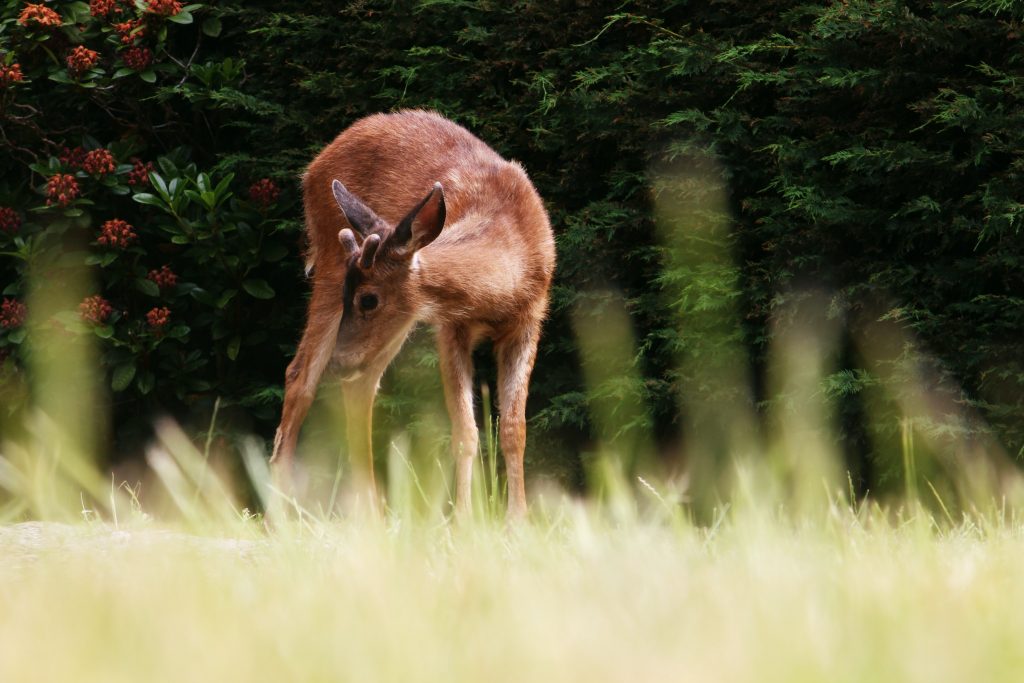
When searching for mushrooms, pay attention to the types of trees around you, as they can often provide clues on where mushrooms may be found. For instance, in the West, cottonwoods in river bottoms and aspen stands are good places to start your search for morel mushrooms 2. Additionally, some mushroom hunters associate the blooming of lilacs with the arrival of morels 1.
Finally, it’s essential to know which mushrooms are safe to consume. Familiarize yourself with local mushrooms and, if possible, consult an experienced mushroom hunter or a mycologist in your area. Be extra cautious when picking mushrooms, as certain toxic species can resemble edible ones. Carrying a mushroom field guide or using a mobile app for mushroom identification can also aid in your foraging efforts.
By following these friendly tips, you can expect an enjoyable and fruitful mushroom hunting adventure. Happy foraging!
Footnotes
- https://tinylivinglife.com/8-mushroom-hunting-tips-for-a-successful-harvest-from-an-experienced-mycophile/
- https://www.onxmaps.com/hunt/blog/morel-mushroom-hunting-maps-where-to-find
Frequently Asked Questions
What are the top mushroom hunting spots in Ohio?
Ohio is home to several well-known mushroom hunting locations. Hocking Hills State Park and Cuyahoga Valley National Park are popular spots for finding a variety of mushroom species. Make sure to familiarize yourself with local regulations and stay on designated trails while foraging.
Where can I find morels in Indiana this year?
Morels tend to grow in wooded areas, especially near dying or dead trees like elms and ashes. Pay close attention to the ground around these trees as you explore Indiana’s forests during the springtime. Keep in mind that weather conditions such as rainfall and temperature can impact morel growth, making their appearance more unpredictable.
Which locations are famous for mushroom hunting in Michigan?
Northern Michigan boasts prime mushroom hunting territory. Manistee National Forest, Pictured Rocks National Lakeshore, and Sleeping Bear Dunes National Lakeshore are some of the top spots. Remember to study local mushroom species and regulations before venturing out on your foraging adventure!
What is the morel mushroom map for 2023?
A morel mushroom map isn’t available yet for 2023, as morel sightings vary each year. However, you can usually find morel maps from previous years online. These maps are updated regularly by fellow foragers and can give you some general ideas of where to start looking.
Are there any mushroom hunting clubs I can join nearby?
Mushroom hunting clubs indeed exist! In the United States, consider checking out Eat The Planet’s list of foraging tours, classes, and groups to find a club in your area. Joining a mushroom hunting club helps you gain access to knowledgeable community members and learn valuable foraging skills.
Where to look for mushrooms in states like Oregon and Wisconsin?
Oregon’s temperate rainforests, as well as Wisconsin’s diverse woodland areas, offer prime opportunities for mushroom hunting. In Oregon, the Mount Hood National Forest and the Willamette Valley are popular spots. In Wisconsin, consider visiting the northern hardwood forests or the Kettle Moraine State Forest. As always, familiarize yourself with local regulations and practice sustainable foraging practices!

